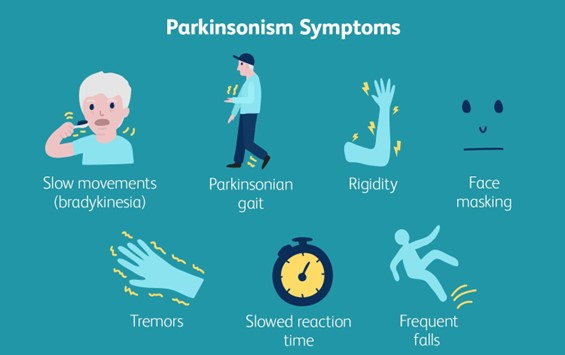The community health nurse utilizes which of the following approaches to explain the factors that allow the reproduction and spread of infectious disease?
Natural history of disease
Health promotion
Levels of prevention
Epidemiologic triangle
The Correct Answer is D
Choice A reason: Natural history of disease is not an approach that explains the factors that allow the reproduction and spread of infectious disease. Natural history of disease is a concept that describes the progression and outcome of disease in the absence of any intervention. It includes stages such as susceptibility, exposure, incubation, prodrome, clinical, recovery, disability, or death.
Choice B reason: Health promotion is not an approach that explains the factors that allow the reproduction and spread of infectious diseases. Health promotion is a process that enables people to increase control over and improve their health. It involves strategies such as education, advocacy, policy, or community development.
Choice C reason: Levels of prevention is not an approach that explains the factors that allow the reproduction and spread of infectious disease. Levels of prevention is a framework that classifies different types of interventions based on their timing and purpose. It includes primary prevention (before disease occurs), secondary prevention (early detection and treatment), and tertiary prevention (reducing complications and disabilities).
Choice D reason: Epidemiologic triangle is an approach that explains the factors that allow the reproduction and spread of infectious disease. Epidemiologic triangle is a model that identifies three essential components of an infectious disease: agent (the microorganism that causes the disease), host (the person or animal that is infected), and environment (the physical, biological, or social factors that influence the transmission). The interaction and balance among these components determine the occurrence and spread of an infectious disease.

Nursing Test Bank
Naxlex Comprehensive Predictor Exams
Related Questions
Correct Answer is A
Explanation
Choice A reason: Giving the patient extra time to perform activities is an appropriate action by the nurse. Bradykinesia is a symptom of Parkinson's disease that causes slow and reduced movement, making it difficult for the patient to initiate and complete tasks. The nurse should respect the patient's autonomy and dignity, and allow them to do as much as they can by themselves, without rushing or interfering.
Choice B reason: Teaching the client to walk more quickly when ambulating is not an appropriate action by the nurse. Bradykinesia can affect the patient's gait and balance, making them prone to falls and injuries. The nurse should not encourage the patient to walk faster than their ability, but rather provide them with assistive devices, such as a cane or walker, and ensure a safe environment.
Choice C reason: Placing the client on a low-protein, low-calorie diet is not an appropriate action by the nurse. Bradykinesia does not require any specific dietary modifications, unless the patient has other comorbidities, such as diabetes or hypertension. The nurse should ensure that the patient has adequate nutrition and hydration, and avoid foods that may interfere with their medication absorption, such as high-fiber or high-fat foods.
Choice D reason: Completing passive range-of-motion exercises daily is not an appropriate action by the nurse. Bradykinesia can cause muscle stiffness and rigidity, which can limit the patient's range of motion and flexibility. The nurse should encourage the patient to do active range-of-motion exercises, which involve moving their own joints to their full extent, rather than passive ones, which involve someone else moving their joints for them. Active exercises can help maintain muscle strength and joint mobility and prevent contractures and deformities.

Correct Answer is B
Explanation
Choice A: Collaborate with a physical therapist to develop programs for injured employees to return to work. This is incorrect because this is a tertiary prevention strategy, not a secondary prevention strategy. Tertiary prevention aims to restore function and prevent disability or complications after an injury or illness has occurred.
Choice B: Help plant workers identify signs of carpal tunnel syndrome. This is correct because this is a secondary prevention strategy. Secondary prevention aims to detect and treat health problems early before they become more serious or chronic. Carpal tunnel syndrome is a common occupational health problem that can cause pain, numbness, and weakness in the hand and wrist. Early identification and treatment can prevent permanent nerve damage and disability.
Choice C: Organize an influenza immunization campaign. This is incorrect because this is a primary prevention strategy, not a secondary prevention strategy. Primary prevention aims to prevent disease or injury from occurring in the first place, by reducing exposure or risk factors. Influenza immunization can protect plant workers from getting infected by the flu virus and reduce the spread of the disease.
Choice D: Teach plant workers about proper lifting techniques. This is incorrect because this is also a primary prevention strategy, not a secondary prevention strategy. Proper lifting techniques can prevent musculoskeletal injuries such as sprains, strains, and herniated discs, by avoiding excessive stress on the spine and joints.

Whether you are a student looking to ace your exams or a practicing nurse seeking to enhance your expertise , our nursing education contents will empower you with the confidence and competence to make a difference in the lives of patients and become a respected leader in the healthcare field.
Visit Naxlex, invest in your future and unlock endless possibilities with our unparalleled nursing education contents today
Report Wrong Answer on the Current Question
Do you disagree with the answer? If yes, what is your expected answer? Explain.
Kindly be descriptive with the issue you are facing.
